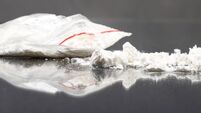No more secrets as hair tests set to expose drinkers’ habits
Scientists have developed a range of hair, blood and urine tests which can show how much someone has drunk over the past days, weeks or even months. Alcohol disappears from the body within hours, but drinking produces chemicals which stay in the body much longer.
New Scientist magazine says doctors and employers may use the new tests. There are already tests used to show if someone has been drinking, but most rely on indirect evidence such as the level of liver enzymes in the blood. But the results can be affected by other toxins, and even pregnancy.
However, used together, researchers say the new tests could give a complete picture of a person’s drinking habits, showing when someone had last been drinking and whether they are heavy or light drinkers.
They could have a range of uses. Airlines could test a hair from a pilot’s head to show if he/she has been drinking. And police may be able to use the tests hours or even days after an accident to find out if someone had been drinking when it took place.
Each of the tests looks for a chemical produced as the body processes alcohol.
Chemicals called fatty acid ethyl esters (FAEEs) appear in the blood within 12 to 18 hours of having a drink, but they are eventually stored in the hair.
Dr Friedrich Wurst of the University of Basel in Switzerland, one of the scientists involved in the research, monitored around 40 drinkers and teetotallers.
It was found FAEE levels accurately distinguished between light and heavy drinkers. Dr Wurst said: “The only way to remove the evidence is to shave all body hair.”
A chemical, phospatidyl ethanol (PEth), remains in the blood for up to three weeks in people who drink more than three beers a day, or the equivalent. Another chemical, ethyl glucuronide (EtG) accumulates in the blood as alcohol levels fall. Dr Wurst, said: “Ethyl glucuronide, plus the absence of alcohol itself, indicates a potential hangover state.”
Dr Charles Lieber of the Mount Sinai School of Medicine in New York, said the tests could be extremely useful. “We don’t really have comparable tests for prolonged intake.
“We don’t have anything comparable in place, and there is potential there.”













